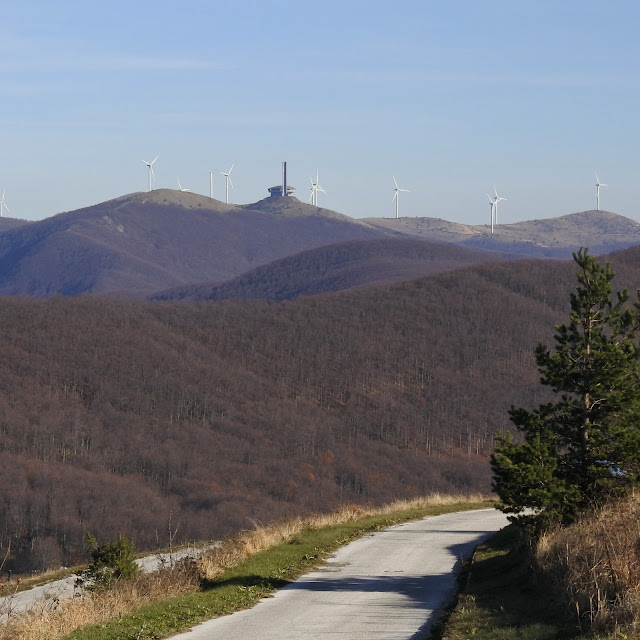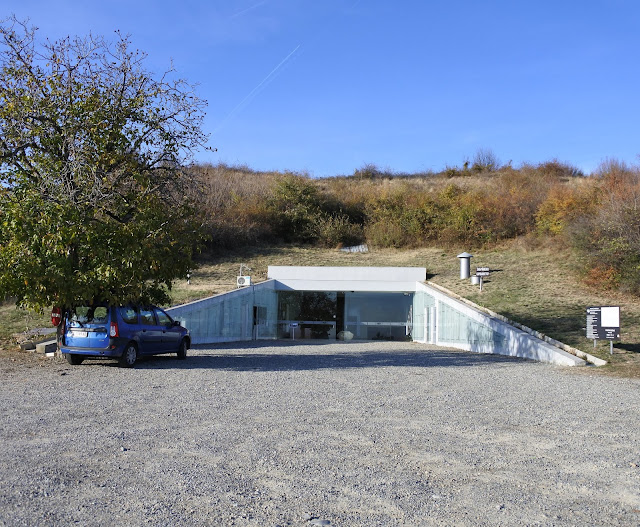About me
My Trips
- 2022: A Yugo-Nostalgic ride [Kosovo - Montenegro]
- 2019: A taste of the Alps [Italy - Austria]
- 2019: In search of concrete Titans - part III [Bul...
- 2018: In search of concrete Titans - part II [Bulg...
- 2018: In search of concrete Titans - part I [Bulga...
- 2018: A ride over the clouds [Albania - Montenegro]
- 2017: Transfagarasan Highway - DN7C [Romania]
- 2016: Russia & Baltics
- 2016: Scouting Central Albania
- 2016: Romanian «Vampire-Free» birthday ride [Bulga...
- 2015: Eastern European «radioactive» ride [Ukraine - Transnistria - Moldova - Romania]
- 2015: Alone in central Balkans [Serbia - Bosnia - Bulgaria]
- 2015: Exclusion Zone, Chernobyl & Pripyat [Ukraine]
- 2015: The Greater Caucasus ride [Georgia]
- 2014: Roads over traces of conflicts [Kosovo - Ser...
- 2014: A ride by the Danube River [Romania & Bulgaria]
- 2013: From Niš to Sarajevo: a ride through recent history [Serbia - Bosnia]
- 2013: Balkan ride [Kosovo - Serbia - Montenegro - Albania]
PoI's and Roads
- The Pindus mountain range: Tzoumerka & the Baros Pass [Greece]
- Prespa Lake & the TransFlorina Highway [Greece]
- Patarei prison: Estonia's darkest secret
- Wolf’s Lair - The WW2 German command post [Poland]
- A glance in Transnistria and Tiraspol [PMR]
- Inside the Exclusion Zone, Chernobyl & Pripyat [Ukraine]
- Veliky Novgorod: Where it all began
- Hill of Crosses: Lithuanian timeless icon
- Helsinki: Daughter of the Baltic
- Transfagarasan Highway - DN7C [Romania]
- Großglockner Hochalpenstraße [Österreich]
- Scouting South Serbia
- Devil’s Throat [Bulgaria]
Post by country
- Albania (8)
- Austria (3)
- Bosnia and Hercegovina (6)
- Bulgaria (17)
- Croatia (2)
- Estonia (4)
- Finland (3)
- Georgia (4)
- Greece - Hellas (8)
- Italy (2)
- Kosovo (6)
- Letonia (1)
- Lithuania (3)
- Moldova (5)
- Montenegro (8)
- Poland (2)
- Romania (12)
- Russia (3)
- Serbia (15)
- Slovakia (1)
- Transnistria (5)
- Turkey (3)
- Ukraine (5)

![Bulgaria: Mountain roads and monuments [Part B'] Bulgaria: Mountain roads and monuments [Part B']](https://blogger.googleusercontent.com/img/b/R29vZ2xl/AVvXsEgsiLjUU9Y6cO0FNJTQrByI5Zv_J3Z0AGHEocdaWvM2N3Y2DJR4NKVfVEDq0fC8fs9mCBpoM6fQALAJA6ZYN4f8XpJriIgIMTgxzJ-1rElXodvP50Qslj837oKcRAZ4cTcgfbubKn-TPd8/s640/00+.jpg)
![Bulgaria: Mountain roads and monuments [Part B'] Bulgaria: Mountain roads and monuments [Part B']](https://blogger.googleusercontent.com/img/b/R29vZ2xl/AVvXsEjxdMBHK8pI9uy1RA0IAxrH7K2mQ92q0xocNx4mn8KrWzm-lVyUHZklMShUR5vbj7H2oS8vc94Swb_kqIe67tiDH7cyWRhyphenhyphenIz4PyEWRUDm6gl1hpDIgGVrs8t3NgIPmtSlX1pyBFdoUvPY/s640/01+.jpg)
![Bulgaria: Mountain roads and monuments [Part B'] Bulgaria: Mountain roads and monuments [Part B']](https://blogger.googleusercontent.com/img/b/R29vZ2xl/AVvXsEizE8KtL9k_8eqGSNKhgM2p-W7WG-dDBzzVb2JxOSAu0xJ69QEdX8d8rQ3ZjXptAcAl0yoRBLt8WEd3jl2M-NEXGJsQZATeyBWUlhBJfyjc9LbJr8_tPn0kk3eYdCRtkJoUzFj8-qCGHWQ/s640/02+.jpg)
![Bulgaria: Mountain roads and monuments [Part B'] Bulgaria: Mountain roads and monuments [Part B']](https://blogger.googleusercontent.com/img/b/R29vZ2xl/AVvXsEj3VU810IgnlfPHswK3fnm2Bbk4yXeZbRrTIJGG5io2AGYskO3GpZH3IxCwdcNY-dkMhGjFqt38MDvS_4xMcNuhS8_4H-8p5POVMDjs75GVrl1gsmagE6VJ0uCqVUUG632CJGuWnTrXlKc/s640/03+.jpg)
![Bulgaria: Mountain roads and monuments [Part B'] Bulgaria: Mountain roads and monuments [Part B']](https://blogger.googleusercontent.com/img/b/R29vZ2xl/AVvXsEgki1pXLfA6XPisIkxFYeV2ULdE-qaJque-q6fqO-Zn3tWn4IPH2szgpxRycju5kzkP_hQJclSUi7euxoMwtTF04BjRMEJmkoElv8rqspQUg2WJrj8Gptun-qy8aWc6QtGG5WG4ehIO9PY/s640/04+.jpg)
![Bulgaria: Mountain roads and monuments [Part B'] Bulgaria: Mountain roads and monuments [Part B']](https://blogger.googleusercontent.com/img/b/R29vZ2xl/AVvXsEjBqYxKd5-Unf6k-jeoJ9NRAwIDZ5i0b26tifji9rnYK371iCigr7AvAnLA9U3fF8HaDQRRwlE0Ueb6jRuUMmIo6qS7r1ridQxMpraxsirTmSrSFFrIufO7VqQ7t3PBHgMQlk9WUu_DPew/s640/05+.jpg)
![Bulgaria: Mountain roads and monuments [Part B'] Bulgaria: Mountain roads and monuments [Part B']](https://blogger.googleusercontent.com/img/b/R29vZ2xl/AVvXsEg6u8iodDIcNor0UVwVxts6em0bnrgWNpknJU13MK4VhFt_5GQ6_pKkdM0PpuxUCIIwL9icG1Yy5nh_RbCj1UqUnXTrpGKc_a6dbYRw0I_p3d4K4Je6beqDjPc-W9SDpYUtC5JCKWWjaqQ/s640/06+.jpg)
![Bulgaria: Mountain roads and monuments [Part B'] Bulgaria: Mountain roads and monuments [Part B']](https://blogger.googleusercontent.com/img/b/R29vZ2xl/AVvXsEiYx5sz8H4oizEjYx_1dKzkKoxY4br6u7HZRR6hiqi4NgyL1DGsb21f2628fPqwGc_w0nXDCt2HVYeSrdTgtLm9XEnoM3Uuu04AWghj0-YFnY4oE51FU2yKHD4yqMJguTNc6ZQXurl4W6I/s640/07+.jpg)
![Bulgaria: Mountain roads and monuments [Part B'] Bulgaria: Mountain roads and monuments [Part B']](https://blogger.googleusercontent.com/img/b/R29vZ2xl/AVvXsEg3lHU4HWN9MlkZf_Weyhyphenhyphenhtly0v5COnwCuTZf6ZNb-xQv3cDNmzulPU-9oMq95GEVrS_Ug2x-s-LazBFRHOmeQKopLc9LHedTgy9JV-BMCPrF-UCkfR8ux3b4893uSyMZUxV1Zy8fzsSw/s640/08+.jpg)
![Bulgaria: Mountain roads and monuments [Part B'] Bulgaria: Mountain roads and monuments [Part B']](https://blogger.googleusercontent.com/img/b/R29vZ2xl/AVvXsEhAuqqFNEBZXQVjMxSYxqV-eWpofdhPPVwWJYARMQtsvENUpxRjxzzb6hCDuLMdXZoe2O05wif9OUf_kLcoiPnHHiRQC69DrzsI0Dt7wUHlPwTnE4GnDVqZwStgeTe45ob6xm8dZFgiduQ/s640/09+.jpg)
![Bulgaria: Mountain roads and monuments [Part B'] Bulgaria: Mountain roads and monuments [Part B']](https://blogger.googleusercontent.com/img/b/R29vZ2xl/AVvXsEhalEv0kKwr7NHTWBao-e7t2KxE2pTcg4BDG7i4ku7Rb50GeOppuSLWTXIqzSeP1pkgiQiD1nXO0AgWaPgFIS9NBKUdvPNTVn60RRwEVew4Y3ObbOJrmkUGSejoYgSvKB6wLZgvtqb1CJY/s640/10+.jpg)
![Bulgaria: Mountain roads and monuments [Part B'] Bulgaria: Mountain roads and monuments [Part B']](https://blogger.googleusercontent.com/img/b/R29vZ2xl/AVvXsEgnHaT9a5v9Y7eYzhZf2ox2mOyZWlzISHm3qQ_mVjAU0cld9SFduW1Rf1HoRMnO-kE6Q6pyQvBTEIKtGrpBG4kBLI1HWNTfnDAy4zHG_0fsA8-9TlDXU08O0DYluLaAjN48mQwDGZv7krE/s640/11+.jpg)
![Bulgaria: Mountain roads and monuments [Part B'] Bulgaria: Mountain roads and monuments [Part B']](https://blogger.googleusercontent.com/img/b/R29vZ2xl/AVvXsEiZQopDpRzETVKxacUgWpTDVGdXMFUW5V048YDo3lJr75avkJfYB1DqWREG5AWTDqTJ9zIB2PHgStgnUtY7NkUlL_1WRWXluD85YwIxYBXfqygYIWzJq4jVqLDV38zj2vrViJfviz5awj8/s640/12+.jpg)
![Bulgaria: Mountain roads and monuments [Part B'] Bulgaria: Mountain roads and monuments [Part B']](https://blogger.googleusercontent.com/img/b/R29vZ2xl/AVvXsEjUJMt1JsHK77Ns9_gZc34IOFCE7o32_yPe4ly2Vf62Na86xsJx9vUHeLV6Ho9aip0sHyIiNXpmjU8saRCCEY3L3D0UsofzO_3MpN0qeA_BHqnIllQ0Ul_NDUcZamjJyw9Rdi2Ba5AFYVI/s640/13+.jpg)
![Bulgaria: Mountain roads and monuments [Part B'] Bulgaria: Mountain roads and monuments [Part B']](https://blogger.googleusercontent.com/img/b/R29vZ2xl/AVvXsEiD9EeVep_VjCn3bvsXN-Zh5-lcZQ2mw5NAjI9sjpD7o2Fv7B9O7sdvsCgOxExgRB54HswE4HzjZouIxerdL_Zkw2xD5Yje8wdzrK7S6Gf7USQfn0uDXYox3lrXnQjF0jobEqQQbShUcDM/s640/14+.jpg)
































































































